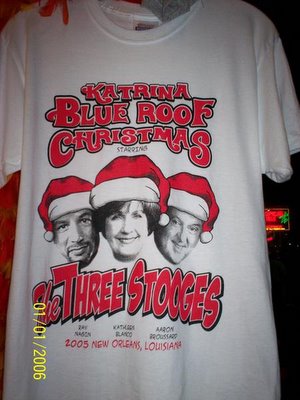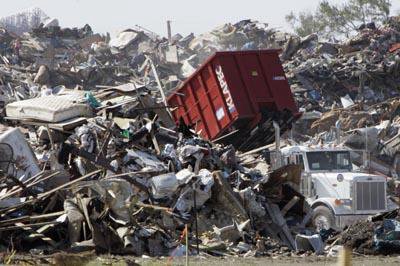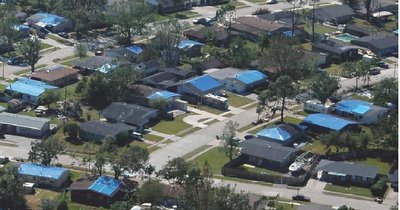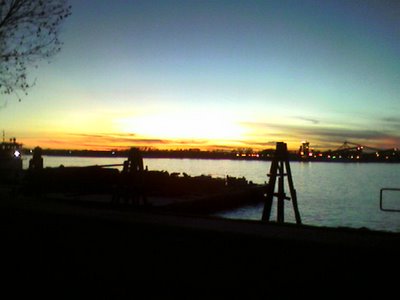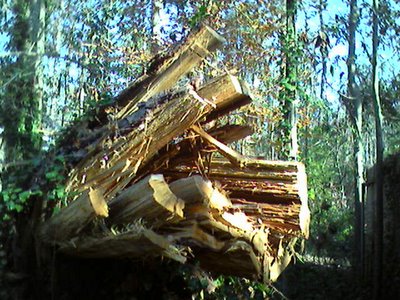I guess that’s me.
I’m talking about all this talk about coastal restoration. I’m talking about how a bunch of politicians and environmentalists are linking coastal restoration to hurricane protection.
I’m telling you, it just ain’t true.
The story they’re spinning sure sounds nice. That we in South Louisiana are feeling the pain of nature’s wrath because we have not been good stewards of the land. That South Louisiana didn’t suffer as much a hundred years ago when hurricanes came to visit because there were miles of marsh and wetlands to protect them from high water. That all of this is our own doing, and we better hurry up and fix it before the next hurricane turns toward New Orleans.
It sounds plausible, but like those get-rich-quick-in-real-estate schemes hawked in endless infomercials, the claims just don’t hold up under scrutiny.
Now don’t misunderstand me, I’m not saying that we should not be concerned about coastal erosion. I’m not saying that loss of wetlands is not a problem. I’m not saying we don’t have to be better caretakers of the environment all around us, an environment that supports and sustains us, an environment to which we are inextricably connected.
I am saying that building wetlands and performing coastal restoration has very little to do with hurricane protection.
There’s no dispute that hurricanes “lose steam” when they cross over land. Quite literally, it is the warm water of the Gulf of Mexico that feeds tropical cyclones and can turn a tropical depression into a “Category 5” hurricane in a matter of hours.
Once over land, hurricanes no longer have warm water to power them, and additionally have to contend with dramatically increased friction at the surface. Think of the difference between spinning wind over open water as opposed to a landscape dotted with trees and buildings.
And it should be obvious that rising land will lessen the effects of a hurricane’s storm surge, that slug of highly elevated water that gets pushed ahead of a hurricane. Many cities don’t have to worry about the storm surge because they are elevated higher than any storm surge could reach.
Wetlands, by definition are low-lying areas that spend an appreciable amount of time each year under water and wet. Along the coast of Louisiana, these areas are typically about 1.5 feet above sea level.
The popular notion is that having a lot of wetlands between cities like New Orleans and hurricanes will protect us from the worst of the storm surge. There is some agreement that for small storms, tropical depressions and Category 1 hurricanes, coastal wetlands are an effective barrier.
And why not? Water being pushed inland at a height of 5 feet over land with an elevation of 1.5 feet will feel that land dragging on it. Waves trying to form and break will have little depth to work with and will subsequently not form very high at all. So wetlands are helpful when small storms come calling.
But what about the big ones? What happens when a Category 5 Hurricane, or a monster surge of 24 feet like the one produced by Katrina comes crashing at those wetlands? Well it turns out that wetlands can’t do much. They get covered, buried under that huge storm surge, so that the benefit of friction has only temporary and nominal effect. And the waves get the full height of water in which to form, too, so the waves come crashing as they do in the open sea.
The net result is that wetlands hardly contribute anything to protecting us from major storms.
But don’t take my word for it. The Corps of Engineers has been working on the wetlands problem for many years. They and the Louisiana Department of Natural Resources have teamed up on a number of projects. Many years of study have resulted in reports like the Coast 2050 and the Louisiana Coastal Area Ecosystem Restoration Project.
While these reports have done a yeoman’s job of documenting the ecological and economic importance of wetland protection and restoration, the connection to storm surge protection is tenuous at best. Here is what the Coast 2050 report has to say about it:
It is commonly acknowledged that barrier islands and coastal wetlands reduce the magnitude of hurricane storm surges and related flooding; however, there are scant data as to the degree of reduction...
Hurricane Andrew gave direct evidence that the physiography of marshes where a storm makes landfall affects the degree to which the storm surge is dampened. The surge amplitude in the Terrebonne marsh system decreased from 9.3 ft above sea level in Cocodrie to 3.3 ft (Swenson 1994) in the Houma Navigation Canal approximately 23 miles due north. This equates to a reduction in surge amplitude of approximately 3.1 inches per linear mile of marsh and open water between Houma and Cocodrie. Similarly, the magnitude of the storm’s surge was reduced from 4.9 ft at Oyster Bayou to 0.5 ft at Kent Bayou located 19 miles due north. This equates to a reduction in surge amplitude of approximately 2.8 inches per linear mile of fairly solid marsh between these sites.
Source: Coast 2050 Executive Summary
Now notice the data was collected during Hurricane Andrew, a Category 5 storm when it made landfall, a bona fide "big one."
The data is scarce, but to perfectly Pollyannaish about it, let’s say it's totally true we can get 3.1 inches of storm surge reduction per linear mile of marsh between where we live and where the hurricane comes ashore.
And let’s also say we want to knock down a storm surge from a monster of 20 feet in height to a tame 10 feet in height. That’s 10 feet of reduction at 3.1 inches per mile. The simple math tells us that we would need 39 miles of wetlands out there to make this happen.
That’s quite a distance.

To protect New Orleans East and St. Bernard from the next “big one,” we would not only have to fill the much-despised MRGO--we would have to fill Lake Borgne! And that's IF it really works, which we don't even know if it will.
I’m sorry to have to be the bearer of bad news. I know it really sounds nice that we can be environmentally-minded and save our cities at the same time, but it’s just not true.
Coastal restoration is an admirable, worthy goal. It just has little to do with hurricane protection.
Do you understand now why I keep writing about how much we need those levees? They're our only hope.


